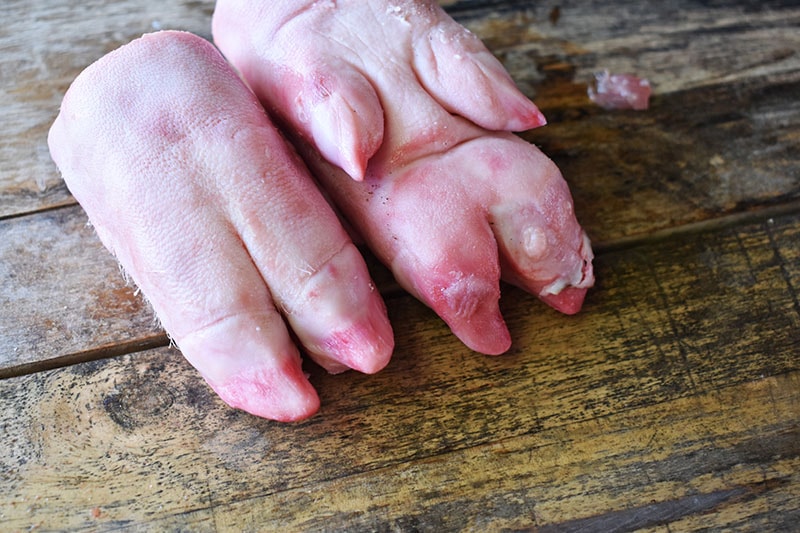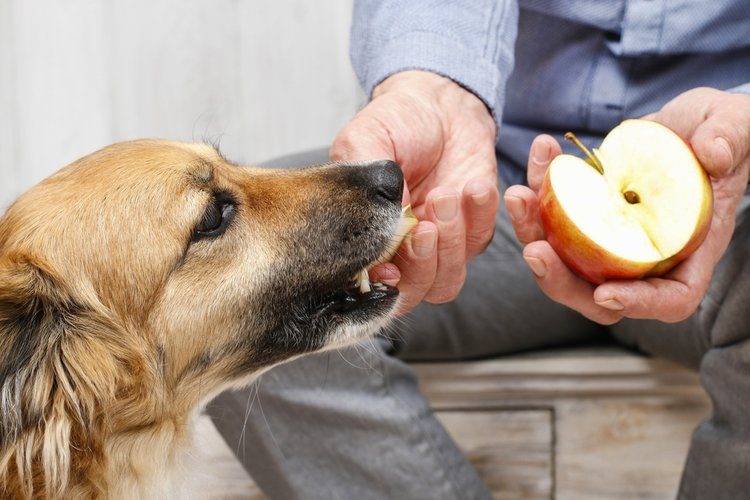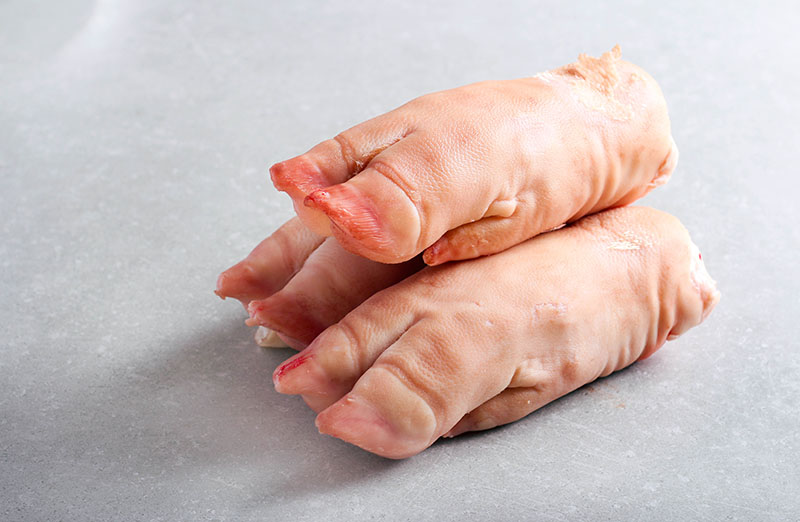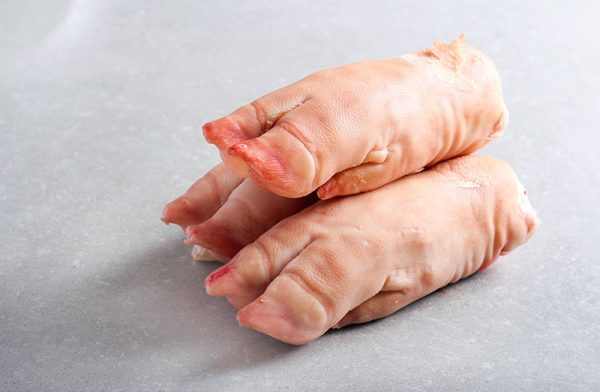Click to Skip Ahead
Dogs are glad to try any meaty snack you wave in their faces, but it can be tricky to tell what exactly they can and can’t eat. For instance, can dogs eat pigs’ feet? Yes, dogs can eat pigs’ feet, but they have both health benefits and some risks that you should be aware of so you can decide whether you give your dog pigs’ feet or not. Even better, we’ve come up with a detailed article about the nutritional content and risks of feeding pigs’ feet to your dog, whether they can eat other types of animal feet, and some valuable other dietary tips. Dive into the details below!
Pig Feet Nutritional Content
Also called pigs’ trotters, pigs’ feet contain meat, bones, fat, and connective tissue, and they’re technically considered offal or inedible. Surprisingly, that makes it a great tough treat akin to a bone for your dog to gnaw on. Though tough, pigs’ feet contain some surprisingly healthy and unhealthy stuff, with both health benefits and risks for your best furry friend. Let’s check out exactly what’s in those pigs’ feet down below.
- 19 grams of protein: Protein is essential for your dog to grow and repair muscle, generate energy, and healthy organ development.
- 197 calories: This is actually a bit high, making pigs’ feet best used as an occasional indulgence.
- 14 grams of fat: While this is a bit high, especially for smaller dogs, it would be fine if fed on rare occasions.
- Trace nutrients: Pigs’ feet have several vital nutrients like vitamin B12, zinc, calcium, phosphorus, and iron.
How to Serve Pigs’ Feet to Your Dog
Always feed raw pigs’ feet to your dog to reduce the chance of the bones splintering and hurting them. Avoid smoked or elaborately seasoned pigs’ feet like those sold in convenience stores. Instead, buy them raw yourself so you can limit your dog’s exposure to harmful spices like garlic or digestive upset from ingredients used in the cooking process.
Start by offering your dog one as a treat to gauge their reaction and to see if their stomachs can handle it. If you observe abdominal pain or diarrhea, chances are they’re just not the right treat for your pup. Small dogs have a harder time with pigs’ feet and are more likely to choke on pieces of bone because of their smaller throats, so we recommend them for medium and large dog breeds only.

Health Risks of Dogs Eating Pigs’ Feet
Pigs’ feet might seem like a tasty and welcome change from the usual bones or rawhide treats, and you’d be right! Pork trotters help break down plaque on your dog’s teeth and discourage dental disease. That said, they have some health-related downsides you should educate yourself on before going whole hog with the pigs’ feet. Take a closer look at some of those below and judge for yourself whether they’re worth it or not for your dog to eat.
- Dental injury: Pig trotters can splinter and scratch or even puncture your dog’s mouth or throat. This is more common in cooked trotters, though.
- Weight Gain: If your dog eats a lot of pigs’ feet on a regular basis, they’re more likely to become overweight or obese.
- Digestive issues: The bones in pigs’ feet can splinter and puncture the stomach in some severe cases. The high fat content can also lead to vomiting, gas, and diarrhea.
- Pancreatitis: More common in small dogs, bouts of painful pancreatic inflammation can be brought on by eating high-fat treats like pigs’ feet.
What Should Dogs Eat?
A dog’s diet is much like a human’s, composed of animal-based proteins, carbohydrates, fat, and a laundry list of essential vitamins and trace minerals. For the vast majority of dogs, a complete and balanced dry kibble is generally enough to satisfy their dietary needs, but let’s be real: dogs like a good treat just like we do. In the spirit of that, let’s check out some staple foods you can offer daily to your dog to help add some variety into mealtime and keep them interested.
- Fruits: Some of the most delicious fruits you can feed a small amount of daily include blueberries, bananas, apple slices, and watermelon.
- Proteins: Dogs thrive on a protein-rich diet, including chicken, turkey, beef, lamb, venison, etc. Just make sure it’s cooked and not processed.
- Vegetables: Dogs enjoy a smoother digestive process thanks to the high fiber content in most veggies. Choose healthy options like carrots, sweet potatoes, or kale.
- Yogurt: Loaded with protein, calcium, and beneficial probiotics, many dogs can handle a tablespoon or two of plain yogurt daily, but more can cause upset stomach and diarrhea.

Are There Other Dental Treat Alternatives to Pigs’ Feet?
Whether you’ve decided that pigs’ feet pose too many risks for your dog or you’re just in search of even more dental treats your dog will go nuts for, you’re not alone. We were curious ourselves and came up with a pretty good list of dental treats you can stock up on yourself today.
- Frozen carrots: Same familiar taste with an even bigger crunch, frozen carrots are a spectacular and healthy summer treat. Just be sure they are in large enough chunks to not be a choking hazard.
- Rawhide: An age-old favorite, rawhide chew toys have an enticing scent and last a long time but have little nutritional content and can cause stomach blockages, so be extremely careful.
- Commercial chew toys: You’ll find many chew toys marketed towards dental health, but you should only give your dog chews recommended by the Veterinary Oral Health Council to ensure the products efficacy and safety. Ask your veterinarian for some recommendations on high-quality, durable options to satisfy your dog’s craving to chew.
Conclusion
Pigs’ feet are a relatively safe and moderately healthy snack for your dog to munch on, but they do pose some health risks like weight gain and stomach troubles. While they can very rarely cause more severe health issues, pigs’ feet are generally safe as long as you limit how many and how often your dog eats them and only give them raw.
See Also:
- 10 Fascinating Facts About Your Dog’s Tail (You Never Knew!)
- Can Dogs Eat Mealworms? Vet-Approved Nutritional Guide
Featured Image Credit: MShev, Shutterstock











